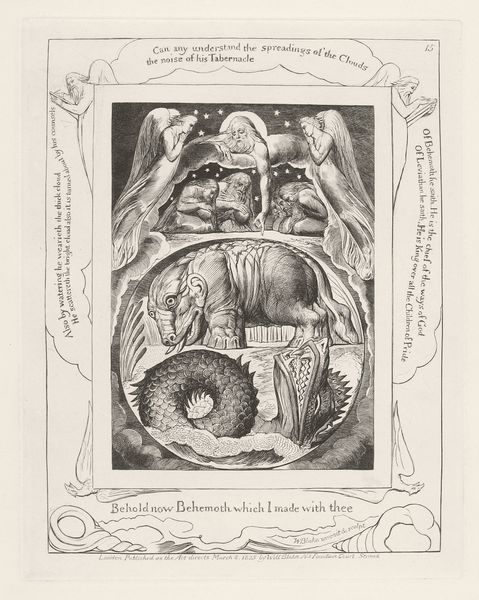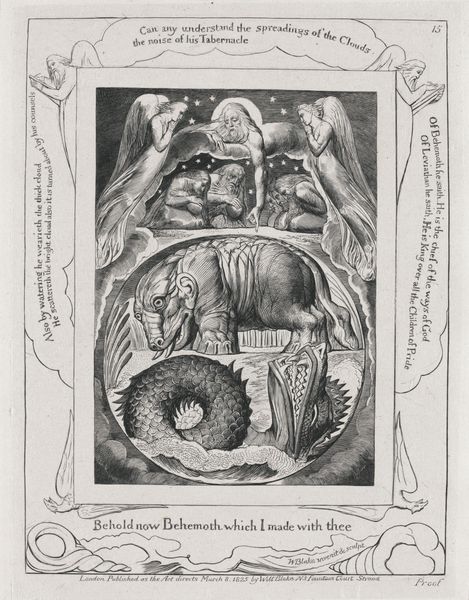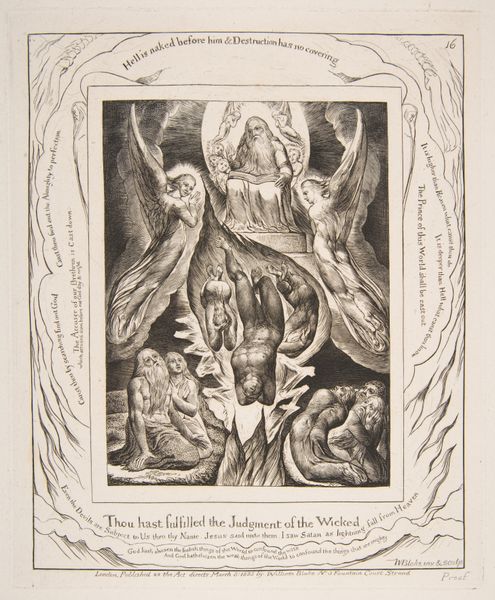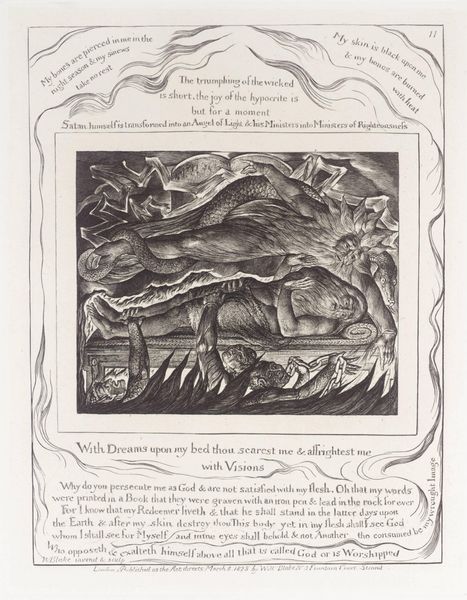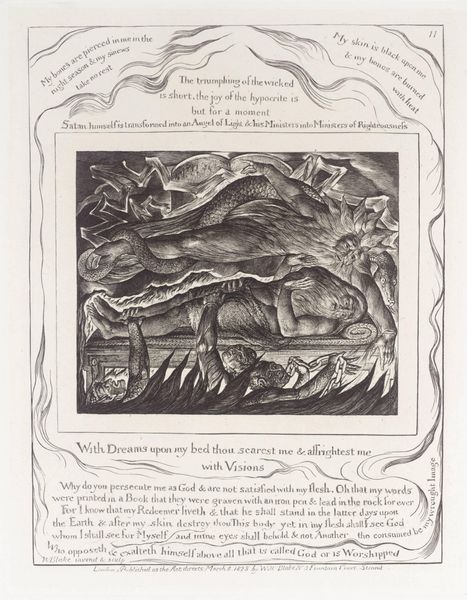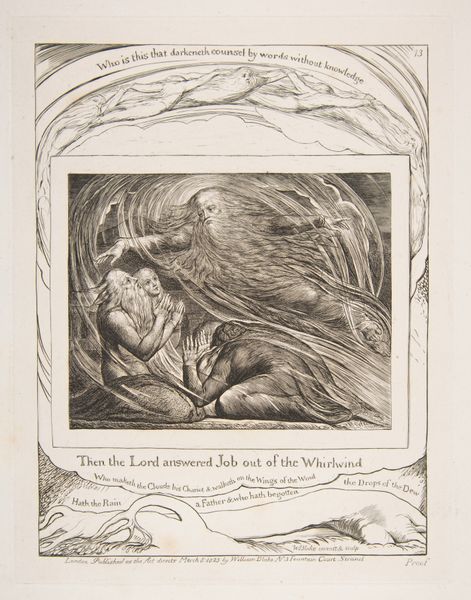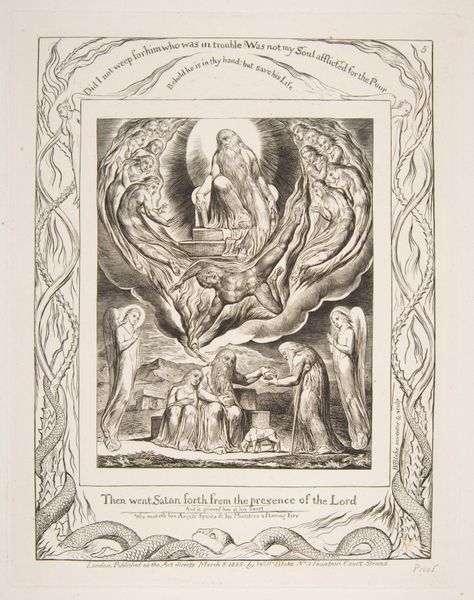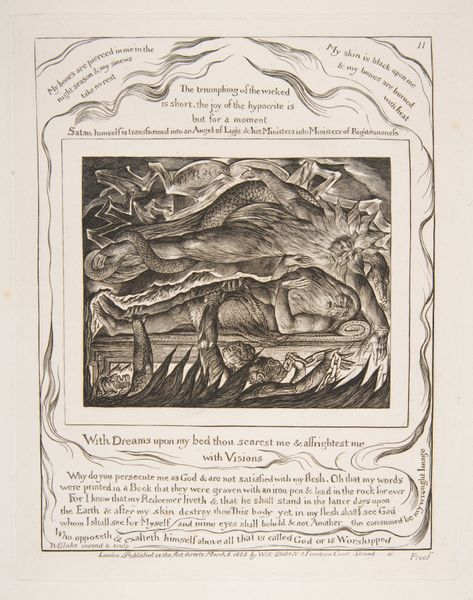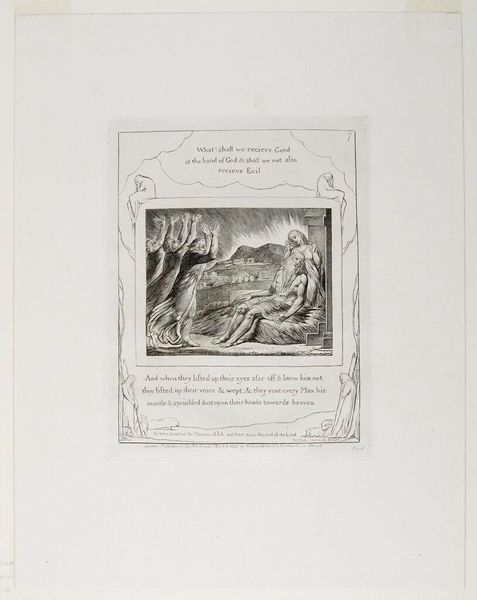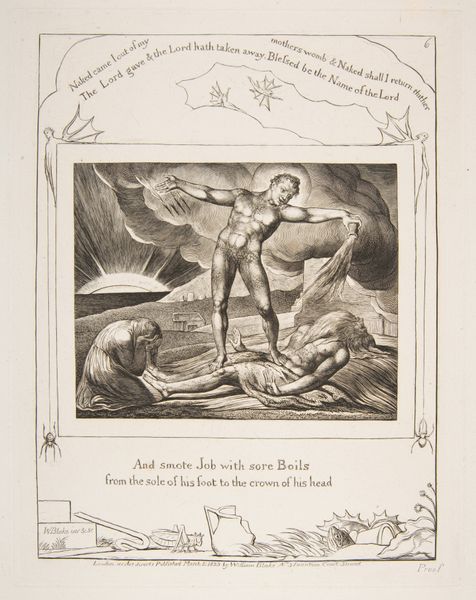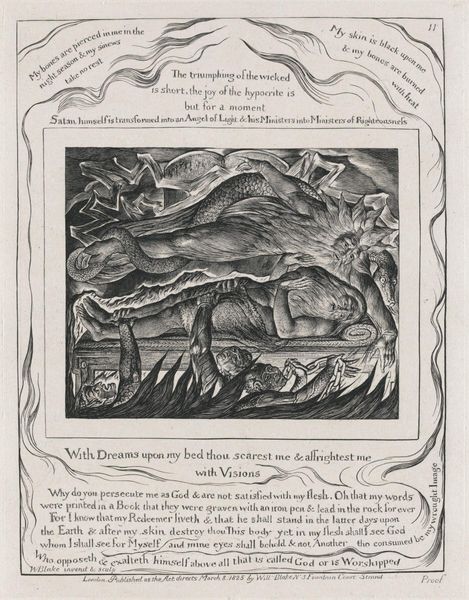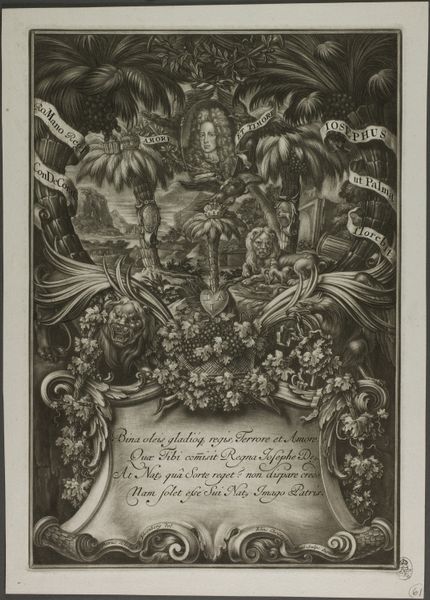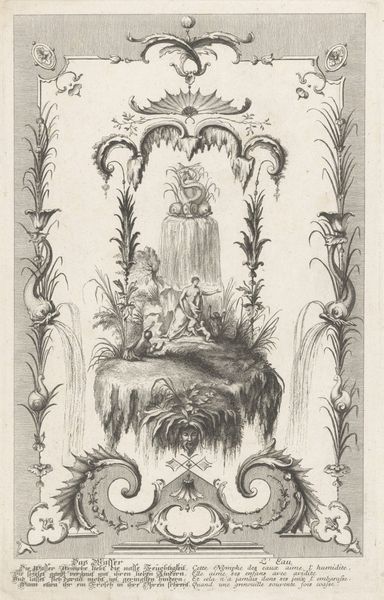
drawing, print, engraving
#
drawing
#
allegory
#
narrative-art
# print
#
figuration
#
romanticism
#
line
#
history-painting
#
engraving
#
angel
Dimensions: plate: 8 1/2 x 6 5/8 in. (21.6 x 16.8 cm) sheet: 16 3/16 x 10 13/16 in. (41.1 x 27.5 cm)
Copyright: Public Domain
Curator: What strikes me first is the raw, almost primal energy conveyed through the stark lines. Editor: And what you are observing here is William Blake's engraving "Behemoth and Leviathan," executed circa 1825-1826. This particular impression is held by the Metropolitan Museum of Art. The composition displays an intense, imagined scene. Curator: Intense is right. Look at the placement of those mythical creatures! Behemoth is massive, almost elephantine, and dominates the upper sphere while Leviathan coils menacingly below. What does it evoke for you, viewed within its historical frame? Editor: It’s thought to have come from the Book of Job; Blake produced engravings inspired by Biblical texts throughout his life, particularly favoring themes of apocalyptic events. These fantastical creatures are often seen as symbols of untamed nature and divine power. Blake was highly critical of institutional power and oppressive structures—both state and religious. I feel it important to look into the political conditions and radical theological interpretations that prevailed at the time, shaping Blake’s critical perspectives. Curator: See how the figures of God and attendant angels hover above, enveloped in clouds and stars, their lines somewhat softer compared to the defined edges of the beasts. The framing of these benevolent characters suggests that divine presence bears witness to, yet remains distanced from, earthly conflicts. Editor: Precisely. But notice the text surrounding the image. Blake used hand-engraved text, weaving together visual and literary forms to reinforce messages concerning institutional structures. The texts from Job suggest awe and terror in the face of divine creations, so it may well critique how contemporary society regards institutions. Curator: Do you think this composition reflects similar tensions or contradictions? Editor: Yes, I would suggest this print encapsulates this duality of order and chaos in institutions in several ways. Blake critiques earthly structures against his interpretation. Curator: I leave with the thought of how even visual languages themselves bear histories, shaped by both intention and reception.
Comments
No comments
Be the first to comment and join the conversation on the ultimate creative platform.
